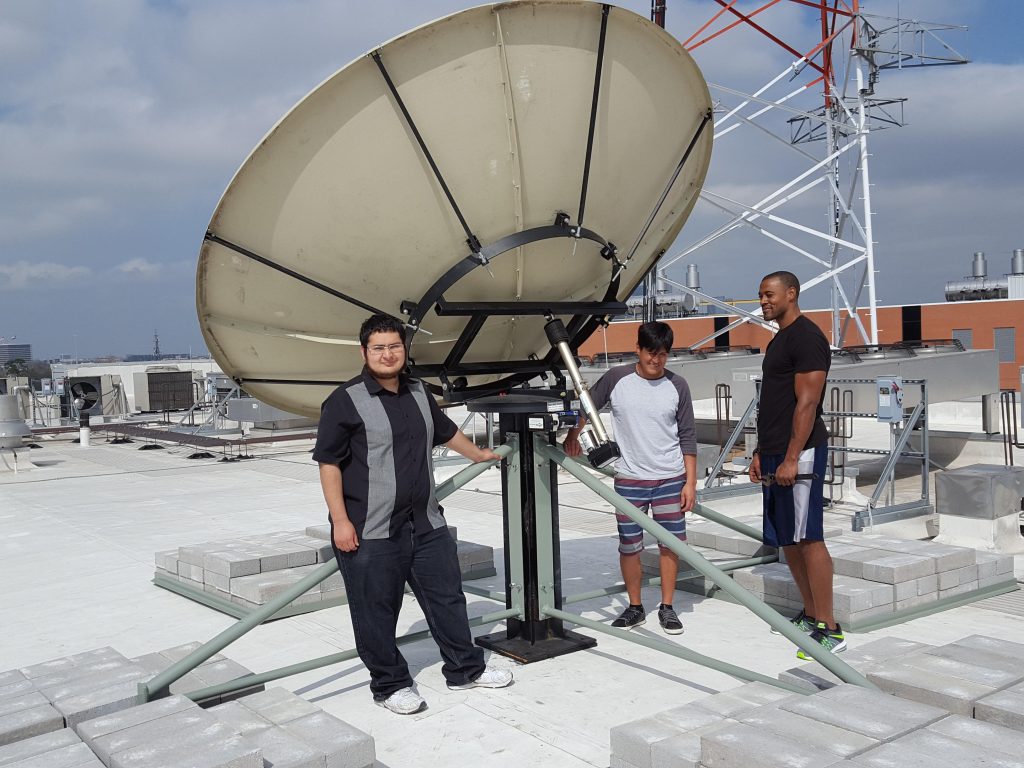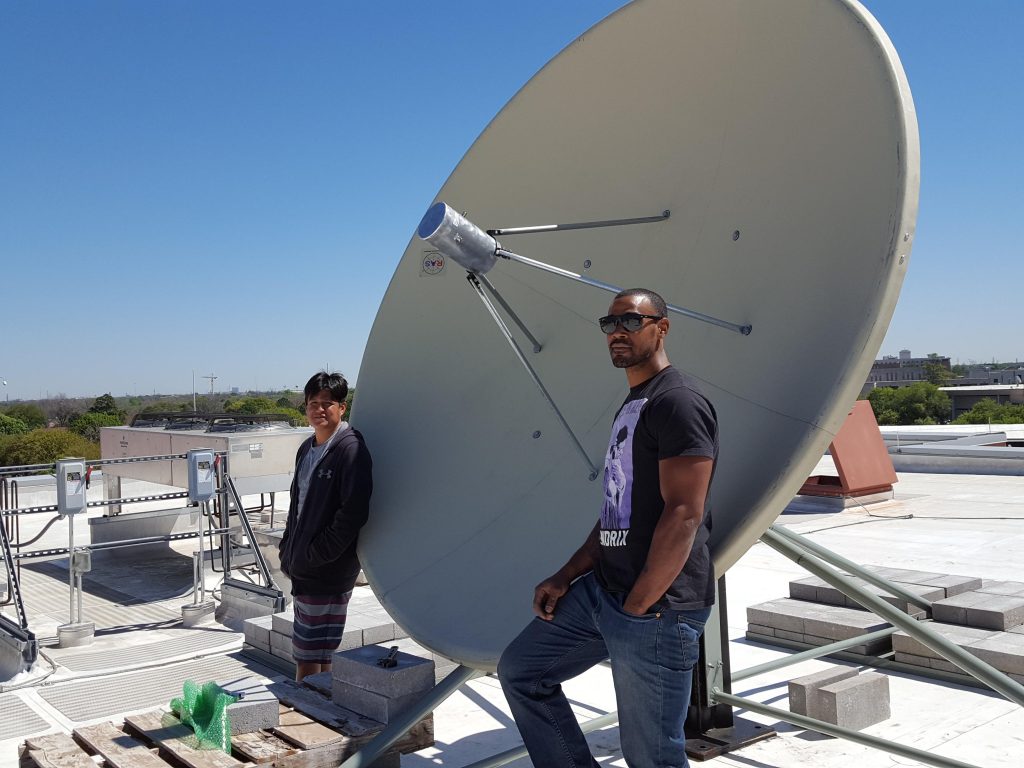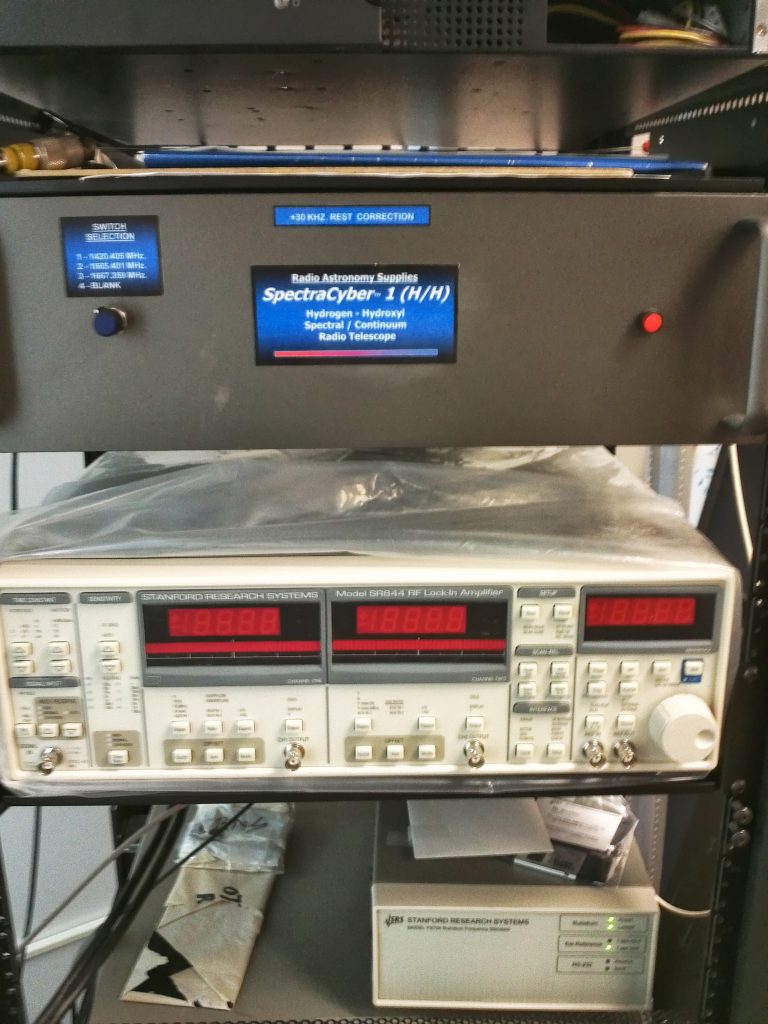or keep pressing Tab key no navigate
There are key experiments in the history of physics that revolutionized our way of thinking about the fundamental structure of nature and the ensuing laws that characterize physical processes. Some of these experiments can be done by upper level physics majors. These
experiments also serve to expose the student to advanced skills indispensable in today’s advancing
technological evolution impacting many industries. Some of the more traditional experiments include:
Michelson Morley interferometer Experiment which confirmed the invariance of the speed of light in a vacuum. This experiment formed the basis for the famous E = mc2 >relation which is at the heart of nuclear fission (i.e. atomic bombs, nuclear power plants, etc.) and nuclear fusion (the energy from the sun, and potentially future energy machines which produce less radioactive bi-products tha
n conventional nuclear power plants).
Millikan Oil Drop Experiment – that measured the charge on an electron.
X-Ray Diffraction for discovering the crystal structure of compounds.
Davisson Germer Experiment which revealed the duality principle of matter (i.e. what we call a particle can sometimes behave as a wave) – “matter waves.”
Nuclear Magnetic Resonance – atomic nuclei, when placed in magnetic fields, will occupy different energy levels that can be excited and de-excited through electromagnetic radiation. This is relevant in many fields, particularly medicine. Other important experiments impact nuclear physics, laser physics, semiconductors, superconductivity, nanostructures, etc. These labs are the cornerstone of a student’s immersion into, and understanding of, physics. Physics lab courses are the stepping stones into student’s participation in faculty led research. This Lab ensures the production of high caliber students able to assist faculty in their research efforts.
This Laboratory represents a link to the outside world of expanded learning opportunities for our students. Students and faculty members will be able to participate in Distance Learning courses in specialized areas not represented within the Department.
This facility currently supports TSU-Physics’ participation within the Texas Physics Consortium (TPC) which includes eight other campuses across the State, pooling their curriculum resources and expanded faculty specializations (i.e. Astronomy, Cosmology, Geophysics, etc.). The other physics programs participating in the TPC include Midwestern State University, Prairie View A & M University, Texas A&M University-Corpus Christi, Texas A&M University-Kingsville, Tarleton State University, Texas A & M University – Commerce, West Texas A & M University, and Texas A & M University-Central Texas.
Expanding the course offerings available to TSU students will make them more competitive in their post-graduate career objectives. The production of well trained students is essential for sustaining TSU’s research activities. This classroom contributes to the learning process in a very modern way, ensuring the production of the best trained TSU students possible, able to impact ongoing, faculty led, research.
This is a research and student research training laboratory, emphasizing ongoing departmental research capabilities in noise filtering, atomic physics, and medical physics based research. Students learn modern Nuclear Magnetic Resonance (NMR) techniques which require an understanding of the underlying quantum physics associated with the spinning of atomic nuclei in an ambient, static, magnetic field and the spectrum of the electromagnetic radiation given off by these excitations. NMR is an important physical process with many applications including nuclear waste disposal and cancer detection in soft tissues. In the second case, Magnetic Resonance Imaging (MRI) is the conventional terminology encountered by many in cancer detection protocols. The NMR lab is equipped with the following equipment:
A typical experiment involves probe preparation, field configuration, pulse design, data acquisition and data processing. Students will become familiar with contemporary electronics and digital signal and image processing. Participating students will also learn how to do research as part of a team, each contributing a particular skill. The ultimate objective of the underlying research is to develop more cost effective techniques, requiring low level magnetic fields, for effective cancer detection.
h3>DEPARTMENT OF PHYSICS
The Medical and Nuclear Physics Laboratory is a faculty research lab and also and a training facility for student researchers. This laboratory focuses on low energy nuclear physics, in which fundamental techniques are applied that are effective for detection and analysis of radiation levels impacting people in many workplace environments including nuclear power plants, medical diagnostic and treatment facilities, food processing plants, homeland security checkpoints, etc.
This Laboratory is also concerned with basic and applied research in nuclear physics. The “applied” thrust pertains to understanding related issues in the context of (1) medically related, radiation physics based, therapy and diagnostic applications impacting diseases; and (2) understanding the radiation thresholds in various workplace settings impacting organisms and the environment.
Selected students will participate in fundamental research projects emphasizing these two areas specified above. In addition, students will have an opportunity to participate in (1) high energy nuclear physics research at the Brookhaven National Laboratory and (2) nuclear astrophysics at the Facility for Rare Isotope Beams (FRIB) on the campus of Michigan State University. Besides mastering basic dosimetry and radiation detection skills developed within the curriculum, participating students will get to apply these skills in the prosecution of basic and applied research. Additional capabilities in Monte Carlo simulation studies in nuclear collision physics, radiation biophysics, radiation shielding and therapeutic applications of radiation will also be developed.
The objective is to develop a strong cohort of students that can pursue these studies at high powered facilities, eventually transitioning into professionals in the diverse areas of nuclear physics; e.g., heavy ion collision physics, nuclear astrophysics, radiation safety and protection, radiation therapy, diagnostic imaging and radiation biophysics. The advanced training received by selected students, developed within the context of prosecuting basic and applied research in medical, health, and nuclear physics, respectively will produce uniquely trained students able to enter the workforce in diverse areas such as nuclear facilities, government laboratories, medical treatment and diagnostic facilities, food processing plants, etc. Students can also pursue advanced training in health physics as a stepping stone to careers as radiation oncologists, radiation therapists, etc., within the medical profession. Houston hosts the world’s largest medical facility, the Texas Medical Center, with tremendous employment opportunities for such students. Some students can also elect to pursue a Ph.D. in medical physics or health physics – or even fundamental nuclear physics, in which the smallest constituents of matter are probed at the world’s most elite high energy physics facilities. In all cases, our physics students will have an abundance of career opportunities.
The Medical and Nuclear Physics Teaching Lab builds upon the successful implementation of a Health Physics program at TSU begun in 2008. Health Physics concerns the understanding of nuclear processes as it affects safe working environments for living organisms (i.e. human beings in particular), within medical facilities, nuclear power plants, government research facilities, food processing centers, etc. Some of the equipment resources in this lab include:
Students enrolled in the traditional health physics program at TSU take two semesters of laboratory classes, which focus on unique hands- on experiments involving various radiation detection apparatuses, analyses, and techniques. In the first laboratory component, students learn how to use a Geiger-Mueller system to measure radiation emitted for various
radionuclide species. In the second installment of the laboratory sequence, students learn how to use a sodium iodide detector system to measure spectroscopic signatures from gamma-emitting radioisotopes. The final component in this sequence is a nuclear electronics laboratory, in which students learn fundamental signal pulse analysis using standard instrumentation commonly employed in nuclear and radiation physics.
Given that Houston hosts the world’s largest Medical Consortium, The Texas Medical Center (TMC), it is natural to expand upon proven Health Physics capabilities that overlap Medical Physics. This concerns the understanding of nuclear physics as applied to medical diagnosis and treatment for illnesses such as cancer. To this extent, the Medical/Health – Nuclear Physics Teaching Laboratory will also expand into this area. TSU- Physics has produced exceptional students working or interning as radiation safety specialists. A list of these facilities included the Nuclear Regulatory Commission, UT MD Anderson Cancer Center, UT Health Science Center at Houston, Texas Commision on Environmental Quality (Radiation Division), UT Southwestern Medical Center. Additionally, TSU-physics graduates have gone on to attend either graduate school or medical school at the following institutions: Texas A&M University at College Station, University of Texas at Austin, School of Medicine-Texas Tech Health Sciences, Howard University, Morgan State University, Tulane University.
Funding for the radiation health physics laboratories have been provided by grants from the Nuclear Regulatory Commission.
Located on the roof of the Spearman Technology Bldg the Department of Physics has installed a 3m antenna plus the electronic equipment to conduct observations at a wavelength of 18cm. In addition, we have a simple multi-channel autocorrelator to process the signal and additional software for calibration. Finally, we also own a CASPER-ROACH dual correlator for high-resolution multi-frequency processing.

With the standard setup we can detect the galactic Neutral Hydrogen (HI) and the 1665/1667 MHz OH MASER transitions in star forming regions and late-type stars. While HI emission allows us to track and map the morphology of the Milky Way galaxy; OH, H2O and CH3OH MASERs allow us to study particular periods of the star formation process. One of the major advantages of radio astronomy is that it detects radiation in regions where optical telescopes cannot. Due to large amounts of gas and dust in these regions visible radiation does not find is way through. Also, the physical processes in these regions are low energy driven so they can only be observed and studied in the radio and infrared regimes of the electromagnetic spectrum.

Researchers have also access to National and International observatories like: Very Large Array (VLA), Very Large Baseline Array (VLBA) in the USA, European VLBI Network (EVN) and MERLIN (UK) to study the radio emission in various fields of research. The future of Radio Astronomy is very bright and promising. In the last decade new multimillion-dollar arrays with the latest instrumentation and technologies have been built like ALMA (mm-array in Chile) and SKA (square km-array in So. Africa & Australia).

All students pursuing careers in the STEM as well as non-STEM areas must take one of the three service physics courses: Physical Sciences (for non-STEM-majors), College Physics (I & II, consisting of a comprehensive overview of laws of physics, without using calculus), and University Physics (I & II). The latter involves the use of calculus, which is the natural mathematical language of physics.
In addition to the lectures, there are accompanying Labs for College Physics and University Physics. These labs are intended to reinforce basic physics concepts through a “hands-on” approach emphasizing the statistical theory of measurements, and experiencing, first- hand, many of the fundamental laws of Newtonian physics as it impacts mechanics and gravity. These labs introduce students to basic topics such as fluids, waves, and thermodynamics (heat).
The more advanced Undergraduate Physics lab II introduces students to basic topics such as electricity and magnetism, optics, and modern physics. Students acquire a basic understanding of all these areas through experiments designed to reinforce the lectures. All of these topics are indispensable to the careers pursued by the diverse body of professional interests represented in our students, both majors and non-majors. Students with these skills and knowledge are in high demand in many professions (health sciences, pharmacy, education, engineering, aeronautics, etc.).
These labs are the cornerstone of a student’s immersion into, and understanding of, physics. These Labs will prepare students not only in the technical preparation of physics, but also in the scientific method of empirical research impacting all the sciences. Students will learn team work, sharpen their advanced mathematics skills (i.e. vectors, trigonometry, algebra, and statistical analysis), and develop critical thinking skills based on direct interaction with experiments.